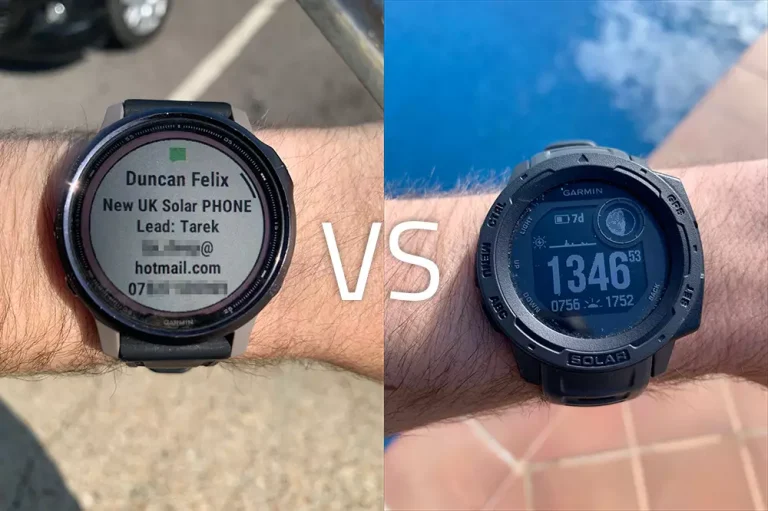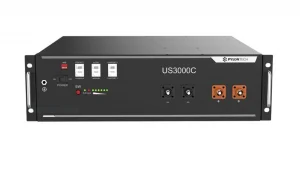
Choosing a fitness tracking smart watch can be overwhelming with so many options. However if you need a rugged outdoor watch, Garmin’s Instinct Solar and Fenix are two of the best smart watches.
Both watches are aimed at outdoorsy people who enjoy:
- Hiking
- Running (including trail running)
- Surfing
- Skiing
- Kayaking
- Open water swimming
- Lots of other outdoor activities
Personally I love going out hiking and exploring the mountains around the south of Spain where I live. Having an outdoor GPS smart watch makes the whole experience more fun by allowing me to track where I’ve been, along with fitness tracking data to see how I’m improving.
So today, I’ll be comparing two of the most popular rugged GPS smart watches: Garmin Instinct Solar vs Fenix 6.
Best for longer outdoors adventures: Instinct Solar
Best for city and outdoors: Fenix 6 Pro Solar
Best value for money: Instinct Solar
Personally I bought the Fenix 6 (Pro Solar version) originally and then sold it to get the Instinct Solar instead because I preferred the longer battery life, better solar panel, and less complicated user experience of the Instinct Solar.
The difference between the Instinct Solar and the Fenix 6 are pretty noticeable as soon as you start looking at the watches up close. The Instinct Solar has a more rugged look, with a monochrome screen, whilst the Fenix 6 has a sleeker appearance with a full colour display – although it’s still pretty tough.
The Fenix could look equally at home on your wrist going out to a nice restuarant, as bombing down a ski slope or hiking a trail. Whereas the Instinct Solar screams “rugged outdoorsman”.
The pro version of the Fenix also has better smart watch features, including Bluetooth audio with an offline version of Spotify so you can go for a run or adventure without even bringing a phone, and still have music plus a full map and navigation mode. Whereas the Instinct Solar only has a very basic map which essentially shows a dotted line of where you’ve been and that’s it, and it doesn’t have any music function.
The battery life however is where the Instinct Solar shines. Because it has a much more energy efficient monochrome display, which in my experience gives me about 13 days of battery life with all the smart features including heart rate tracking turned on. If you’re out in the sun more it should last even longer. The Fenix 6 which I had lasted for about 3 days.
Pricing
The Instinct Solar is significantly less expensive than the Fenix 6 Pro Solar, but still has most of the key smart watch features that you’ll find on the Fenix. It’s also more rugged and has better battery life, which is why I ended up trading in my Fenix for an Instinct.
That’s not to say that the Fenix 6 is overpriced. In fact I think it’s also great value – if you want the additional features such as being able to go for a run without bringing your phone, and still get maps and music.
How Well do they Work as Solar Watches?
Solar powered watches aren’t new – the classic Citizen Eco Drive has been around seemingly forever. However these Garmin Solar Watches are fully fledged smart watches that both offer heart rate tracking, which are quite battery hungry features.
I love anything solar powered, because I like the feeling of using renewable energy from the sun, and also the prepper in me likes the idea that solar power usually means not being so reliant on the grid.
That said, how much of a real feature is the solar panel on these watches? Is it actually useful, or just a gimmick to trick eco conscious outdoors types like you and me?
Is Solar Worth it on the Garmin Fenix 6?
There’s several versions of the Fenix 6. I actually found it quite confusing when buying mine. There’s a 6S range, 6X, and also different types of glass face that you can get in combination, including sapphire glass. The one I ended up getting was the Fenix 6 Pro Solar. There are a couple of other models with a solar panel, easily identified because they model name always has ‘solar’ at the end.
The solar panel itself is mostly underneath the display, except for a very thin border around the main display which you can see.
Honestly I really wanted to love the Garmin Fenix 6 Pro Solar. The advanced features such as the turn by turn navigation and mapping seemed really cool. And the idea of solar charging seemed awesome.
In reality at this stage, the ‘power glass’ solar technology is more of a gimmick on the Fenix 6. It’s cool to see the solar intensity graph to see how much sun exposure you’ve had that day, but as a practical feature it’s not quite there. Which is one of the main reasons I switched to the Instict Solar instead.
Ultimately it’s better to buy a seperate solar charger and use that to charge your Fenix every few days, if you are out in the backwoods with no grid power.
What about on the Garmin Instinct Solar?
Solar charging on the the Garmin Instinct Solar works significantly better than on the Fenix 6 Pro Solar. This is because it is a lot more energy efficient with its monochrome display, and has a solar panel which is less covered by the display. The dual screen design helps make the solar technology look nicely integrated into the watch face, although it’s not as pretty as the Fenix 6.
Garmin claim that the solar technology on the Instinct, when in battery saver watch mode, enables unlimited battery life as long as you spend a few hours outdoors each day. Wheras on the Fenix 6 it simply extends the battery life by a few days, even if you use the power manager to shut down some of the fitness tech features which eat battery life.
In my experience of having the Fenix 6 solar edition for a few months, then swapping it for the Instinct Solar, the Instinct has a really noticeable difference in battery life.
When I’ve been out hiking with the watch in GPS mode, on a sunny day, the battery seems to go down much more slowly than the Fenix did. With the Fenix I had to make sure the battery was full before I went out for a run or a hike, otherwise I felt like it might get too low. With the Instinct I don’t really have to think about the battery.
With typical day to day use as a fitness watch, connected to my phone and connect app the whole time, I only need to charge the Instinct Solar roughly every two weeks.
For me, it’s the perfect balance of having all the key features of a smart watch, whilst not worrying about charging it (or breaking / scratching it).






